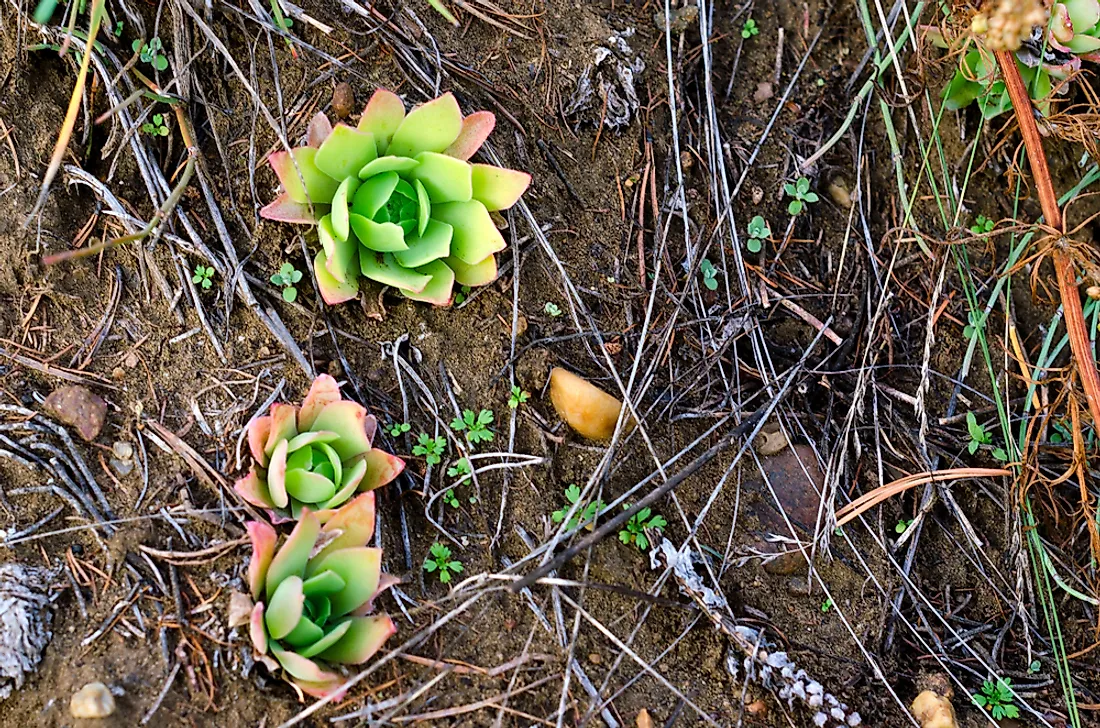Characteristics Of Succulent Plants

Succulent plants, often referred to simply as succulents, are plants that tend to grow in arid regions and have some parts which are thick and fleshy because they retain and store water. The word "succulent" is borrowed from the Latin word sucus, which means sap or juice. Succulent plants are characterized by their ability to store water in different parts of the plant, such as the stem or leaves. Occasionally, the term also includes plants that store water in their roots, such as geophytes, which have a special adaptation that protect the plant from being eaten by herbivores. In horticulture, the term succulent sometimes excludes plants that a botanist would classify as succulent, such as cacti. Given their unique and striking appearance, succulent plants are often grown as ornamental plants.
Description
Succulent plants are typically drought-resistant and have leaves, stems or roots that become unusually fleshy because they store water in their tissues. Plants that are adapted to dry and harsh environments, such as succulents, are known as xerophytes. However, not all xerophytes are succulents, because some plants have developed unique characteristics such as small leaves which can roll-up or leathery leaves instead of succulent leaves. Similarly, not all succulents are xerophytes, as some plants classified as succulents are also aquatic plants.
Unique Characteristics of Succulent Plants
The ability of a succulent plant to store water gives the plant its fleshy or swollen appearance, which is a characteristic referred to as succulence. Additionally, these plants have evolved to include a unique characteristic known as Crassulacean acid metabolism (CAM) photosynthesis, which is a pathway of carbon fixation utilized by plants that grow in arid conditions. Plants that perform CAM photosynthesis have the stomata of their leaves closed during the day to limit evapotranspiration, and open at night to allow carbon dioxide to collect and diffuse into mesophyll cells. At night, the carbon dioxide is stored in vacuoles as four-carbon acid malate, and during the day the malate is reverted back to carbon dioxide after it is transported to chloroplasts, which are used in the photosynthesis process. The pre-collected carbon dioxide is typically concentrated around RuBPCase enzyme and therefore increases the efficiency of photosynthesis. Other unique characteristics of succulents include leaves that are reduced, absent, or cylindrical in shape, a reduced number of stomata, and the ability to perform photosynthesis in the stem rather than the leaves.
Habitats of Succulents
Succulents can be found growing in all continents, except for Antarctica. Although succulents are known to originate in dry regions such as deserts, semi-deserts, and steppes, the driest parts of the world actually contain very few succulents. For instance, Australia, which is the world's driest continent, contains very few succulent plants that are native to the continent because of its frequent and prolonged droughts. Additionally, Africa is home to the highest number of succulents, but they typically do not grow in the driest parts of the continent. Although succulents are not able to grow in the harshest conditions, they are capable of growing in conditions in which other plants cannot grow.







